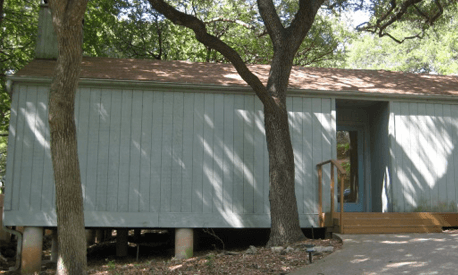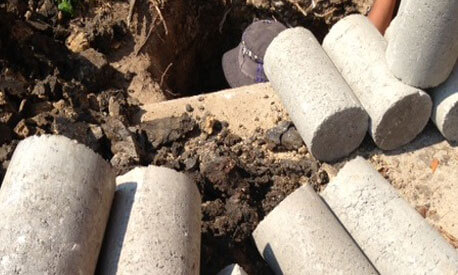If you’ve got a home with a pier and beam foundation, catching problems early really does save you money and stress. Understanding the basics of pier and beam repair helps you notice issues before they spiral out of control. From uneven floors to gaps under your house, these foundations can be a hassle if you’re not paying attention.
Maybe you’ve seen sloping floors, doors that don’t want to budge, or that weird dampness under your place. These are just a few of the most common signs that repairs might be on the horizon. Pier and beam repair covers everything from leveling to swapping out rotten beams, so knowing what’s involved means you’re less likely to get blindsided by big bills.
Wondering what you’ll pay for repairs? It really depends on how bad things are. Sometimes it’s a few thousand dollars, but major fixes can shoot past $10,000. When you know what’s coming, it’s a lot easier to plan for your home’s safety and your own peace of mind.
Understanding Pier and Beam Repair

Pier and beam foundation repair makes homes stronger and safer when damage or wear happens underneath. Here’s a look at how these repairs work, what you can catch early, and why foundations tend to need attention in the first place.
What Is Pier and Beam Foundation Repair?
Pier and beam repair means fixing or reinforcing a foundation that’s held up by piers (posts) and wood or concrete beams. These homes usually have a crawl space between the ground and the first floor—sometimes handy, sometimes a headache.
Typical repairs? Shoring up the house, swapping out or fixing busted piers, adjusting sagging beams, or adding new supports. Sometimes, they’ll even have to lift the house a bit to get it level again. Jobs like concrete pier foundation repair or working on concrete piers need special tools and know-how.
If you’re looking for foundation repair in Dallas pier and beam, expect contractors to crawl under your house, check out the piers, and suggest fixes or reinforcement options.
Common Signs of Foundation Issues
You might spot foundation problems through little changes inside your house—sometimes they’re easy to ignore, but they can add up fast.
Key signs of pier and beam foundation problems:
- Floors that slope, sag, or feel bouncy
- Doors and windows that stick or have odd gaps
- Cracks in walls, especially above doors or windows
- Spaces or gaps between floors and baseboards
Musty smells or mildew in the crawl space? That’s usually a moisture problem. You can spot a lot of these on your own, but a pro inspection gives you the full picture.
Causes of Pier and Beam Foundation Problems
Pier and beam foundations fail for a bunch of reasons, but water, soil, and plain old time are the usual suspects. Moisture is a big one—water can rot beams or make the soil shift around.
Some common causes:
- Poor drainage or flooding near the foundation
- Unstable or shifting soil under the piers
- Natural settling over the years
- Cracked, broken, or rotting wood or concrete piers
In places like Dallas, TX, pier and beam foundation repair is needed a lot thanks to clay soil and wild weather. Keeping water away from your crawl space is huge for protecting your foundation. Regular checks for soft spots or damage in the beams can help you catch stuff before it’s a disaster.
Solutions and Best Practices for Pier and Beam Repair

Pier and beam repair isn’t just about brute force—it takes planning, the right methods, and knowing your options. Dealing with uneven floors, damaged beams, or shifting piers is all about keeping your home solid and safe.
Pier and Beam Foundation Leveling
Leveling starts with a close look at your foundation. Maybe you’ve noticed sloping floors or doors that stick. Usually, pros use hydraulic jacks to gently lift the foundation back into place.
Once it’s up, they’ll add shims or swap out old piers for new concrete or steel ones. Good drainage is a must—water weakens the soil and can make piers sink. A solid drainage setup keeps water from pooling under your place and making things worse.
Regular checks can spot uneven settling before it gets expensive. For more details, check out this guide to pier and beam repair methods.
Techniques for Foundation Beam Repair
When beams are damaged, they need to be replaced or reinforced to get your foundation back in shape. Most of the time, that means pulling out rotten wood beams and putting in new ones. If the damage isn’t too bad, metal brackets or sister beams can strengthen weak spots.
Sometimes, steel beams are added for extra support, especially in old Dallas homes. Treating wood helps prevent future rot from moisture and pests—never a bad idea.
The right fix depends on your house’s design, its age, and how much damage you’re dealing with.
Choosing the Best Pier and Beam Foundation Repair
The best repair depends on a few things—what’s broken, how much it’ll cost, materials, and who’s doing the work. Around Dallas, you’ll see everything from swapping out rotted beams to beefing up the whole support system.
Main things to compare:
- Contractor experience (try to find folks who specialize in pier and beam repairs in Dallas, TX)
- Warranty and support after the job’s done
- Repair materials (treated wood, steel piers, concrete blocks)
- Price versus how long the repair should last
Going with an experienced crew gives you better odds of a job that lasts.
Frequently Asked Questions
Pier and beam foundations can last a long time if you take care of them, but settling and moisture are always lurking. Knowing a bit about repairs, what affects lifespan, and how to keep things solid can make all the difference.
How do you fix a pier and beam foundation?
Fixing a pier and beam foundation usually means lifting the floor and adding support where it’s sagging. That might mean replacing or adjusting piers, installing new beams, or swapping out bad wood for steel.
If floors are off, contractors add shims or tweak the piers to get things level. Rotten or broken areas? Those get cut out and replaced with fresh wood or metal.
How long do pier and beam foundations last?
With decent care and no major water issues, pier and beam foundations can go 75 years or more. It depends on materials and how much attention you give the foundation over time.
Keep an eye out for water damage, pests, and shifting. Little problems are way easier to fix than big ones.
How do you protect a pier and beam foundation?
Drainage, drainage, drainage. Make sure water runs away from your house—gutters and downspouts should point out, not in. Check under sinks and plumbing for leaks, too.
Look for moisture signs like mold or soft spots on the floor. Regular inspections help you catch problems before they turn into a mess.
Do pier and beam foundations settle?
Pier and beam foundations do tend to settle as the years go by. Shifting soil, changes in moisture, and just plain old age can make the foundation move or get a bit uneven.
You might notice things like sloping floors or cracks creeping along your walls. If settling becomes a problem, contractors can usually adjust the piers and get things level again.
